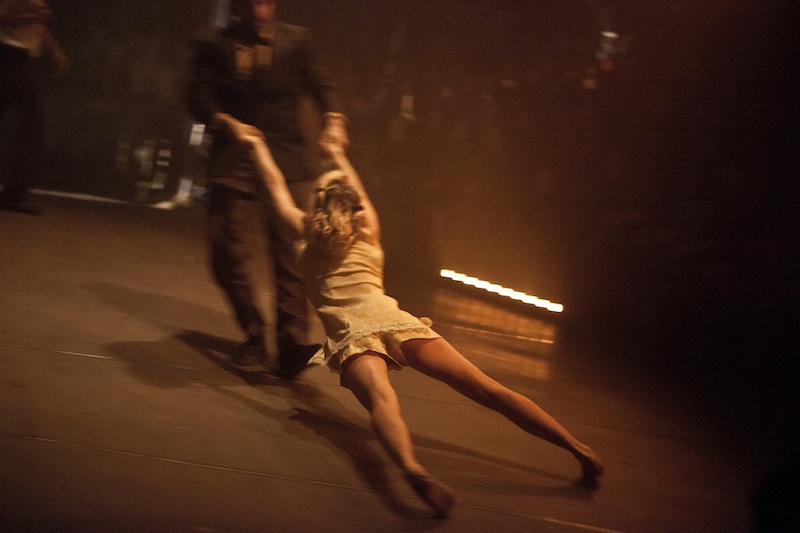Circo Circolo festival, Netherlands; 22nd October 2014

Morsure, by French company Rasposo, is the film noir of circus production. In a series of sensual vignettes of live music, spectacle, atmospheric lighting and lingering looks, the show reveals the social dynamics of male and female relations in a chronological progression through different eras.
Circus techniques are inserted into the theatrical frame as expressions of emotional states, as ‘functional circus’ that forms a natural part of of the story telling, and as dynamic set dressing. While they may not always be essential to the message the piece communicates, the typically circus skills are often used to add to a mood that is being portrayed.
There is a definite feminist angle to the piece, and one of artistic director Marie Molliens’ inspirations was from artworks depicting female anger. Throughout the performance, women are treated with oppressive attitudes and the strongest symbolic moment comes at the end of the performance, as men and women find themselves caged together, and look to escape from the confines of their historical roles.

Black clad Nathalie Halley enters the cage, whip in hand, before the appearance of a superbly feline actor who has been trained with the genuine tigers to impersonate their physicality and movement; finally the roles are reversed and the woman takes control. The reminder that human beings are as animal as the next creature is a common theme among contemporary circus performances, but it’s interesting to note that in the original version of the performance, a real tiger was used. Due practical reasons, the tiger wasn’t brought to the Netherlands, and I think that perhaps the point that is made is all the clearer for that. It is, however, refreshing to meet contemporary circus that doesn’t reject the historical connection of trained animals out of hand, and integrates the skills of tamers and beasts into a new form of circus, just as they have been integrated into film and television productions.
The drifting scenes are indulgent, establishing settings and then drawing them out for longer than would be necessary to propel the narrative. The ‘Bite‘ of the title (‘Morsure’ translated into English) seems to rest in the tensions between men and women that are displayed throughout, but is a little at odds with the slow, loose style.

Rasposo perform in their own big top with semicircular raked seating around the playing floor. Nevertheless, some sight lines (mine, for example!) are poor. There is some remarkable skill, especially from Marie Molliens who, with excellent form, dances a highly expressive and accomplished tight wire solo, as well as flying in russian bar and hand-to-hand numbers (although these are not yet as confident).
A charismatic Hanno Burger appears on aerial straps, as hand-to-hand base, and presents a superb hand balancing display, twisting his hips to 90°, posing and re-posing his legs with great control. Françoise Pierret, as part of the three person band that evokes each era, provides exquisitely diverse vocals, from a jazz trumpet sounding scat to opera.
Perhaps the unhurried pace and stylish imagery is intended to seduce us before the snap of the finale, mimicking the seductions that take place onstage. I was just left wishing they’d get on with it.
.
.




